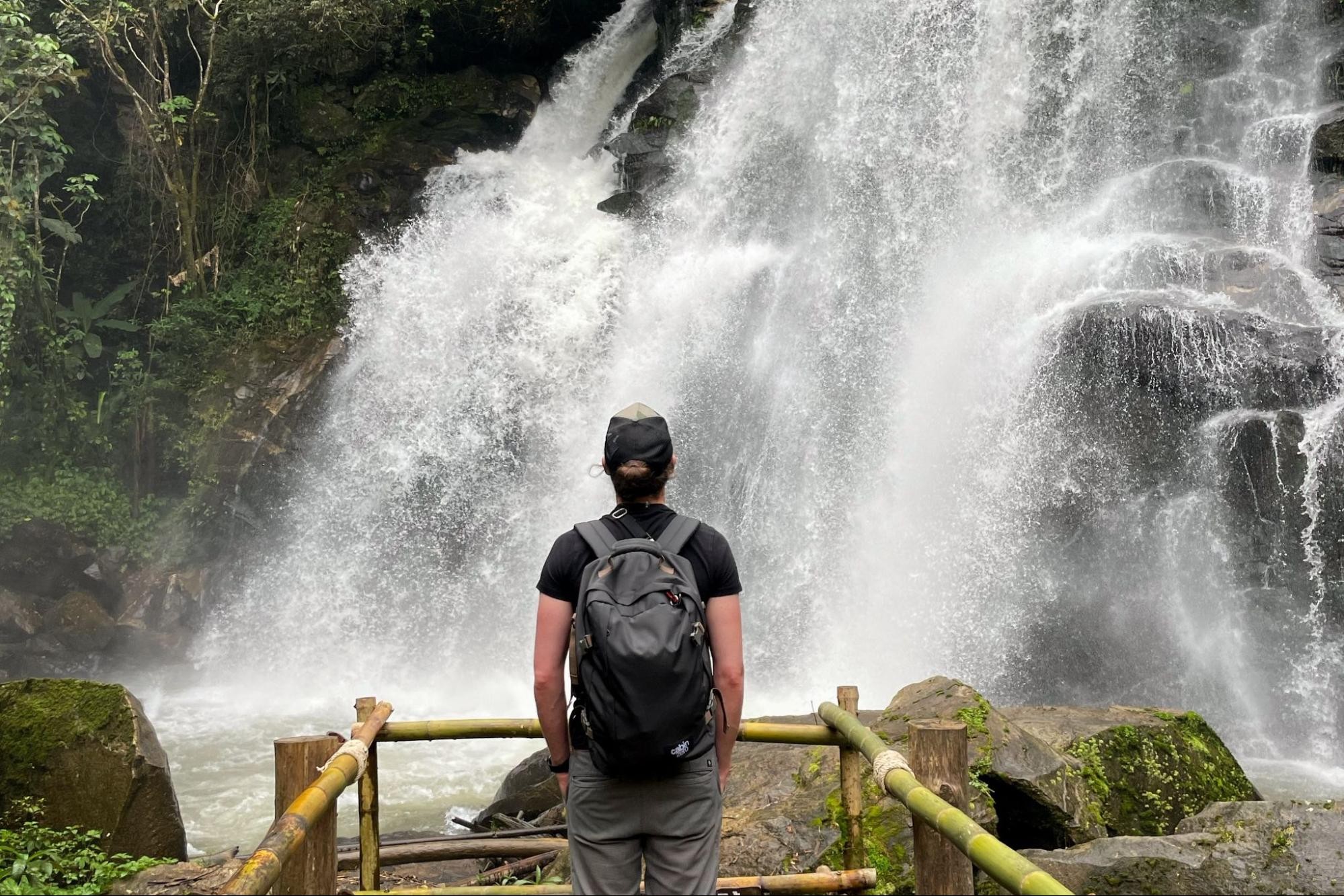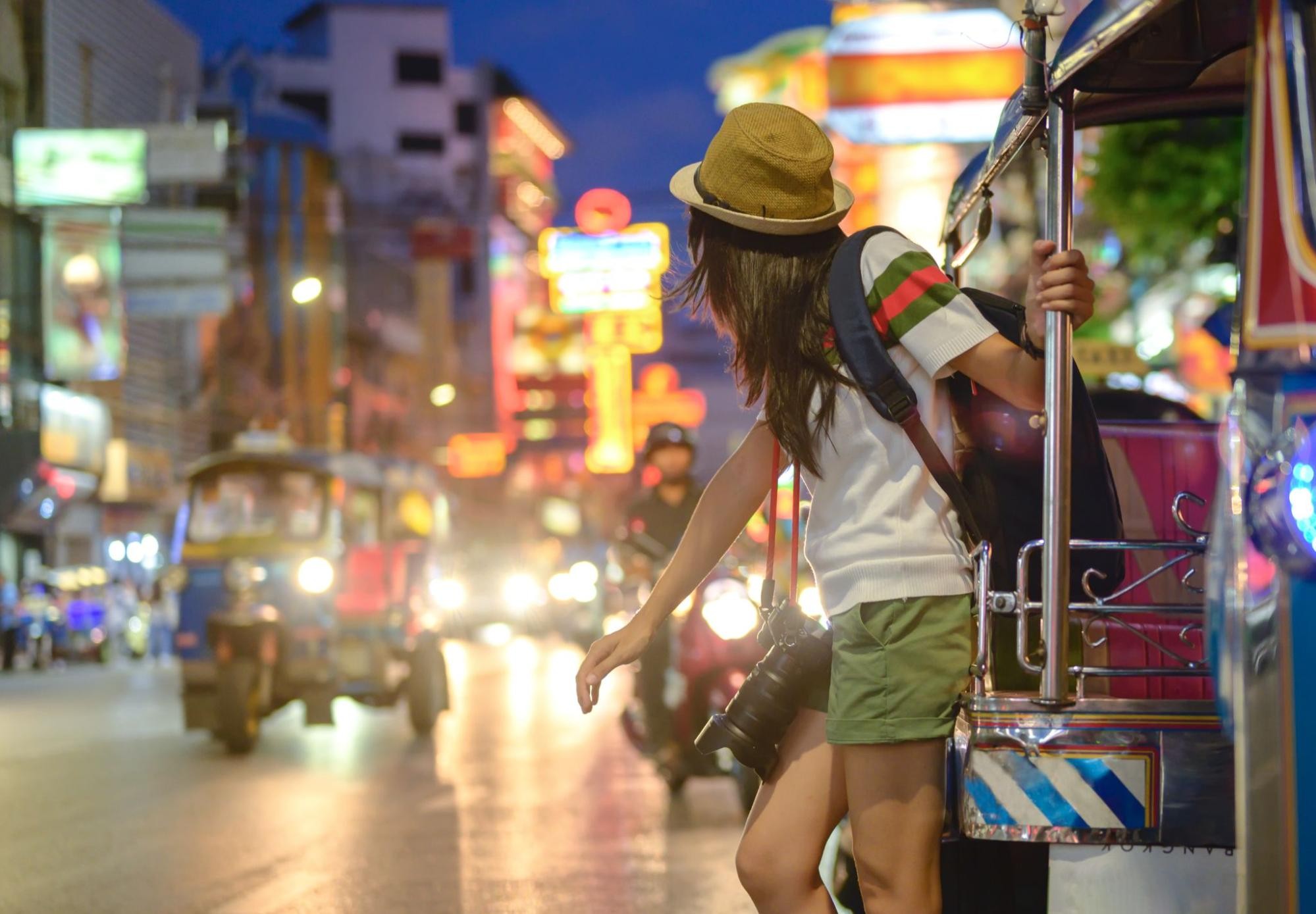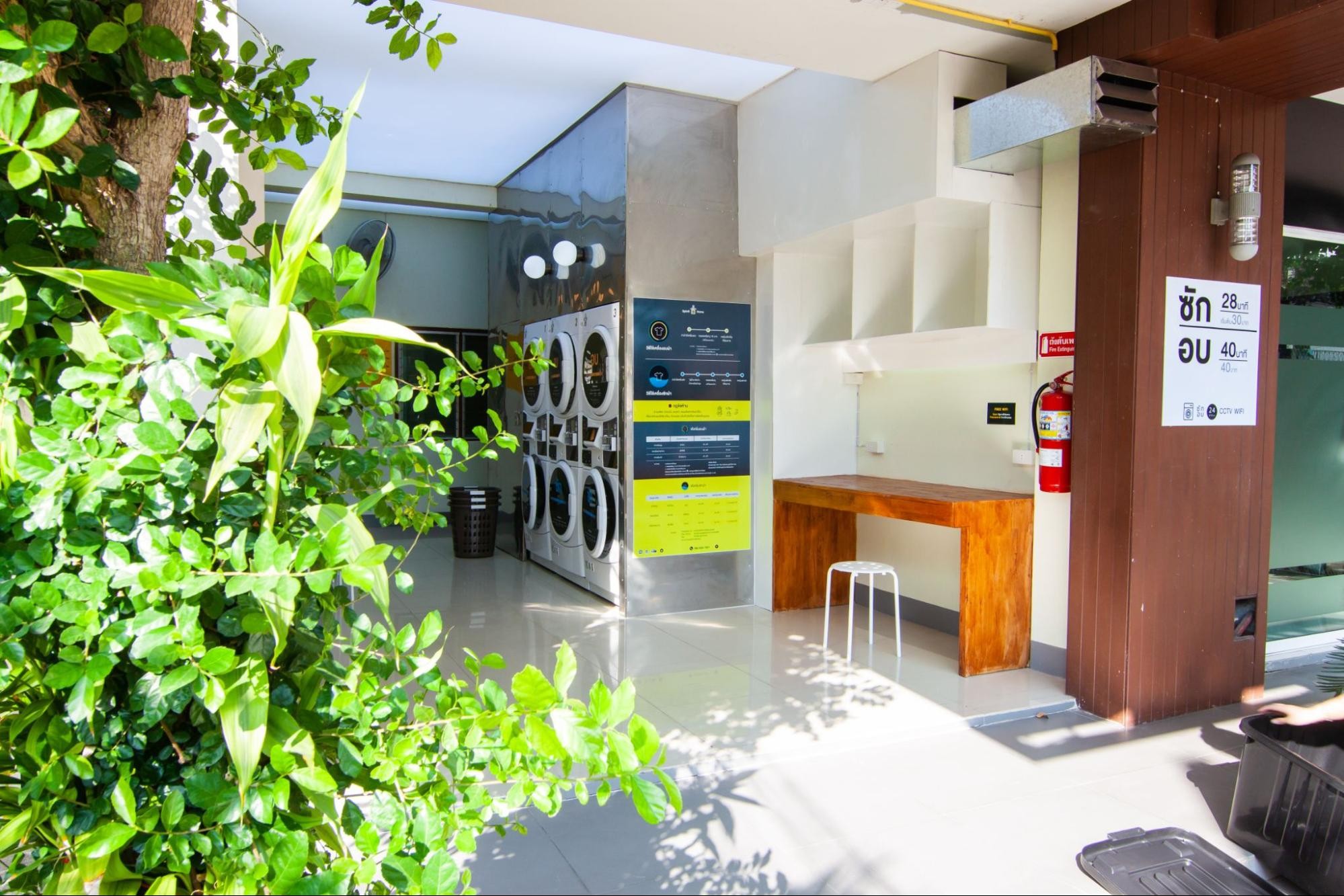What To Pack When Traveling To Thailand? It’s a question every traveler asks before embarking on an adventure to this captivating Southeast Asian destination. TRAVELS.EDU.VN is here to provide you with a comprehensive packing guide, ensuring you’re well-prepared for Thailand’s diverse landscapes, vibrant culture, and tropical climate. This guide will help you pack smartly, avoid unnecessary stress, and make the most of your Thai experience. Consider this your go-to resource for trip preparation and essential travel items!
1. Understanding Thailand’s Climate and Seasons
Before diving into specific items, it’s crucial to understand Thailand’s tropical climate, which significantly influences what you should pack. Thailand generally experiences three main seasons:
- Hot Season (March to May): Expect high temperatures, often exceeding 95°F (35°C), and high humidity.
- Rainy Season (June to October): Monsoon season brings frequent downpours, especially in the afternoon, and increased humidity.
- Cool Season (November to February): This is the most popular time to visit, with milder temperatures around 70-85°F (21-29°C) and lower humidity.
Knowing the season you’ll be traveling in will help you choose the right clothing and gear. Here’s a table summarizing the seasons and recommended clothing:
| Season | Months | Temperature Range | Recommended Clothing |
|---|---|---|---|
| Hot | March – May | 86-95°F (30-35°C) or higher | Lightweight, breathable fabrics (cotton, linen), light colors, sun hat, sunglasses |
| Rainy | June – October | 82-90°F (28-32°C) | Quick-drying fabrics, rain jacket, umbrella, waterproof shoes |
| Cool | November – Feb | 70-85°F (21-29°C) | Lightweight layers, long-sleeved shirts for evenings, light jacket or sweater |
 Traveler in Thailand with Backpack
Traveler in Thailand with Backpack
2. Essential Documents and Information
Ensuring you have all the necessary documents is paramount for a smooth journey. Here’s a comprehensive checklist:
- Passport: Valid for at least six months beyond your intended stay. Check your passport’s expiration date well in advance.
- Visa (if required): Depending on your nationality, you may need a visa. Check the Thai embassy or consulate website in your country for the latest requirements.
- Travel Insurance: Essential for covering medical emergencies, trip cancellations, and lost belongings. Consider comprehensive travel insurance policies.
- Flight Tickets: Have both digital and printed copies of your flight confirmations.
- Hotel/Accommodation Bookings: Keep copies of your hotel reservations, especially if you have pre-booked accommodations.
- Driver’s License (if renting a vehicle): An international driving permit (IDP) is recommended.
- Emergency Contact Information: List of important contacts, including your embassy, family members, and insurance provider.
- Photocopies of Important Documents: Store copies separately from the originals in case of loss or theft.
- Vaccination Records: Ensure you have any necessary vaccinations and keep a record of them. The CDC recommends being up-to-date on routine vaccines and considering vaccines for hepatitis A and typhoid.
- Prescription Medications: Bring prescriptions for any necessary medications.
3. Clothing Essentials: Staying Comfortable and Respectful
Packing the right clothing is crucial for comfort and cultural sensitivity. Focus on lightweight, breathable fabrics like cotton, linen, and moisture-wicking materials.
3.1. Clothing List for Thailand
Here’s a detailed clothing list tailored to Thailand’s climate and culture:
- T-Shirts: 5-7 lightweight, breathable t-shirts. Opt for neutral colors that can be easily mixed and matched.
- Long-Sleeved Shirts: 2-3 long-sleeved shirts for sun protection, cooler evenings, and temple visits.
- Shorts: 2-3 pairs of comfortable shorts. Avoid excessively short or revealing styles.
- Pants/Trousers: 1-2 pairs of lightweight pants or trousers. Consider convertible pants that can be zipped off into shorts.
- Dress/Skirt: 1-2 versatile dresses or skirts for evenings out or cultural sites.
- Swimsuit: 1-2 swimsuits for beach days and poolside relaxation.
- Underwear: 7 pairs of underwear. Choose moisture-wicking fabrics for comfort.
- Socks: 3-4 pairs of socks.
- Light Jacket/Sweater: Essential for air-conditioned spaces and cooler evenings.
- Rain Jacket: Compact and waterproof rain jacket, especially during the rainy season.
- Hat: Wide-brimmed hat or baseball cap for sun protection.
- Sarong/Scarf: Versatile item for beach cover-ups, temple visits, and added warmth.
3.2. Cultural Considerations for Clothing
Thailand is a predominantly Buddhist country, and it’s important to dress respectfully, especially when visiting temples and religious sites.
- Temples: Dress modestly with shoulders and knees covered. Avoid sleeveless tops, shorts, and revealing clothing. Sarongs or scarves are useful for covering up when needed.
- Royal Palaces: Similar dress code to temples.
- General Modesty: While Thailand is generally relaxed, dressing modestly shows respect for local customs, especially in rural areas.
 Woman in Thailand wearing comfortable clothes
Woman in Thailand wearing comfortable clothes
3.3. Footwear
Choosing the right footwear is essential for comfort and safety.
- Sandals/Flip-Flops: Essential for beaches, pools, and casual wear.
- Walking Shoes: Comfortable and supportive walking shoes for exploring cities and temples.
- Water Shoes: If planning water activities, water shoes will protect your feet from sharp rocks and coral.
- Dress Shoes/Sandals: Optional for evenings out or nicer restaurants.
4. Toiletries and Personal Care
Pack essential toiletries, but remember that many items are readily available in Thailand at reasonable prices.
- Travel-Sized Toiletries: Shampoo, conditioner, body wash, toothpaste, and toothbrush.
- Sunscreen: High SPF sunscreen is essential to protect your skin from the strong tropical sun. Note that certain sunscreens containing Oxybenzone and Octinoxate are banned in marine parks.
- Insect Repellent: Protect yourself from mosquitoes and other insects, especially during the rainy season.
- Deodorant: Choose a travel-sized deodorant or solid stick to avoid spills.
- Hand Sanitizer: Useful for maintaining hygiene when traveling.
- Facial Cleanser and Moisturizer: Maintain your skincare routine while traveling.
- Lip Balm with SPF: Protect your lips from the sun.
- Female Hygiene Products: Although available, it’s best to bring your preferred brands.
- Contact Lens Solution: If you wear contacts, bring enough solution for your trip.
- Personal Medications: Pack all necessary medications with prescriptions.
5. Electronics and Gadgets
Consider which electronics are essential for your trip and pack accordingly.
- Smartphone: Essential for communication, navigation, and photography.
- Camera: If you’re a photography enthusiast, bring a camera with extra batteries and memory cards.
- Chargers: Bring chargers for all your devices.
- Adapter: Thailand uses 220V, and the sockets typically accommodate both flat and round prongs. A universal adapter is still a good idea.
- Power Bank: Useful for keeping your devices charged on the go.
- Headphones: For entertainment during travel.
- E-Reader/Tablet: For reading during downtime.
5.1. Staying Connected in Thailand
- Tourist SIM Card: Purchase a local SIM card for affordable data and calls. DTAC and AIS offer tourist SIMs with unlimited data. A 15-day DTAC Happy Tourist SIM costs around 699 Baht. AIS e-sims are another excellent alternative.
- Useful Apps: Download essential apps such as Grab (ride-hailing), Google Maps, Google Translate, and Agoda (hotel bookings).
6. Health and Safety: Preparing for Potential Issues
Your health and safety should be a top priority.
- First-Aid Kit:
- Band-aids
- Antiseptic wipes
- Pain relievers (ibuprofen, acetaminophen)
- Anti-diarrheal medication
- Motion sickness pills
- Antihistamines
- Prescription medications (with copies of prescriptions)
- Hand Sanitizer: Maintain hygiene, especially when access to soap and water is limited.
- Insect Repellent: Protect against mosquito bites and mosquito-borne illnesses.
- Rehydration Salts: Useful for combating dehydration, especially in the hot climate.
6.1. Staying Healthy: Tips and Recommendations
- Consult Your Doctor: Before traveling, consult your doctor about necessary vaccinations and health precautions.
- Food and Water Safety: Drink bottled water and avoid ice from unknown sources. Eat at reputable restaurants and food stalls.
- Travel Insurance: Ensure your travel insurance covers medical expenses, trip cancellations, and other emergencies.
7. Backpacks and Luggage: Choosing the Right Gear
Selecting the right backpack or luggage is crucial for comfortable and efficient travel.
- Backpack: A comfortable and durable backpack between 28-40L is ideal for most travelers. Look for features like padded straps, organizational compartments, and security features. CabinZero’s classic backpack lineups is a popular recommendation.
- Daypack: A smaller daypack for carrying essentials during daily excursions.
- Packing Cubes: These help organize your belongings and maximize space in your luggage.
- Waterproof Bags: Protect electronics and other valuables from rain and water damage.
7.1. Choosing the Right Backpack
When selecting a backpack, consider:
- Size and Capacity: A 28-40L backpack is generally sufficient for most trips.
- Comfort and Fit: Look for padded straps and a comfortable fit.
- Organizational Features: Functional compartments and pockets for easy access.
- Security Features: Lockable zippers and hidden pockets to deter theft.
- Style: Choose a versatile design that can be used for travel, work, and leisure.
 Thailand laundromat
Thailand laundromat
8. Money and Finances: Budgeting for Your Trip
Thailand is generally an affordable travel destination, but it’s important to budget wisely.
- Cash: Bring a mix of cash in small denominations and larger bills. US dollars, Euros, and British pounds are easily exchanged.
- Credit Cards: Credit cards are accepted at many hotels, restaurants, and shops, but it’s wise to have cash for smaller establishments and street vendors.
- Traveler’s Checks: Less common these days, but can provide a secure way to carry funds.
- Notify Your Bank: Inform your bank of your travel dates to avoid having your cards blocked.
8.1. Budgeting Tips
- Accommodation: Budget 500-1,000 Baht per night for budget accommodations.
- Food: Local meals can be found for 50-100 Baht.
- Transportation: Public transportation is affordable. Consider a Rabbit Card or Thai Smart Card.
- Activities: Some activities are free, while others can be expensive. Research and plan accordingly.
- Daily Budget: Estimate spending around 1,000-1,500 Baht per day.
8.2. Exchanging Money
- Exchange Counters: Superrich is known to offer competitive exchange rates.
- Banks: Banks also offer currency exchange services.
- ATMs: Avoid ATMs at the airport due to high fees. Choose the “no conversion” option to let your bank handle the conversion.
9. What Not to Pack: Avoiding Unnecessary Items
Knowing what not to pack is just as important as knowing what to pack.
- Heavy Clothing: Leave bulky jackets and sweaters at home, unless traveling during the cool season.
- Expensive Jewelry: Avoid bringing valuable jewelry to minimize the risk of theft.
- Too Many Shoes: Limit yourself to essential footwear to save space and weight.
- Bulky Guidebooks: Opt for digital versions of guidebooks and travel information.
10. Thailand Packing List Checklist: The Essentials at a Glance
Here’s a handy checklist to ensure you have everything you need:
Documents and Information
- [ ] Passport
- [ ] Visa (if required)
- [ ] Travel Insurance
- [ ] Flight Tickets
- [ ] Hotel/Accommodation Bookings
- [ ] Driver’s License (if renting a vehicle)
- [ ] Emergency Contact Information
- [ ] Photocopies of Important Documents
- [ ] Vaccination Records
Clothing
- [ ] 5-7 Lightweight T-Shirts
- [ ] 2-3 Long-Sleeved Shirts
- [ ] 2-3 Pairs of Shorts
- [ ] 1-2 Pairs of Lightweight Pants/Trousers
- [ ] 1-2 Dresses/Skirts
- [ ] 1-2 Swimsuits
- [ ] 7 Pairs of Underwear
- [ ] 3-4 Pairs of Socks
- [ ] Light Jacket/Sweater
- [ ] Rain Jacket
- [ ] Hat
- [ ] Sarong/Scarf
Toiletries and Personal Care
- [ ] Travel-Sized Toiletries
- [ ] Sunscreen
- [ ] Insect Repellent
- [ ] Deodorant
- [ ] Hand Sanitizer
- [ ] Facial Cleanser and Moisturizer
- [ ] Lip Balm with SPF
- [ ] Female Hygiene Products
- [ ] Contact Lens Solution
- [ ] Personal Medications
Electronics and Gadgets
- [ ] Smartphone
- [ ] Camera
- [ ] Chargers
- [ ] Adapter
- [ ] Power Bank
- [ ] Headphones
- [ ] E-Reader/Tablet
Health and Safety
- [ ] First-Aid Kit
- [ ] Hand Sanitizer
- [ ] Insect Repellent
- [ ] Rehydration Salts
Luggage and Bags
- [ ] Backpack (28-40L)
- [ ] Daypack
- [ ] Packing Cubes
- [ ] Waterproof Bags
Money and Finances
- [ ] Cash (Thai Baht)
- [ ] Credit Cards
- [ ] Notify Your Bank
11. Packing Tips: Maximizing Space and Organization
Efficient packing can save you space and stress.
- Roll Your Clothes: Rolling clothes saves space and minimizes wrinkles.
- Use Packing Cubes: Packing cubes help organize your belongings and keep them separate.
- Utilize Pockets: Store small items in the pockets of your clothing and bags.
- Layer Clothing: Wear your bulkiest items on the plane to save space in your luggage.
- Leave Space for Souvenirs: Don’t overpack, and leave some room for souvenirs.
11.1. Avoiding Common Packing Mistakes
- Overpacking: Only bring what you need and will use.
- Forgetting Essentials: Use a checklist to ensure you don’t forget important items.
- Not Checking the Weather: Check the weather forecast before you pack to ensure you have appropriate clothing.
- Ignoring Cultural Norms: Dress respectfully, especially when visiting religious sites.
12. Essential Thai Phrases: Communicating with Locals
Learning a few basic Thai phrases can enhance your travel experience and show respect for the local culture.
- Hello: Sawasdee (ครับ/ค่ะ) (krap/ka – male/female ending)
- Thank You: Khop Khun (ครับ/ค่ะ)
- You’re Welcome: Yin Deeครับ/ค่ะ)
- Excuse Me: ขอโทษ (khǒo thôht)
- How Much?: ราคาเท่าไหร่ (raa-kaa thâo rài)
- Delicious: อร่อย (aròi)
13. Activities and Excursions: Packing for Specific Adventures
Depending on your planned activities, you may need to pack additional items.
13.1. Beach Getaways
- Beach Towel: A lightweight and quick-drying beach towel.
- Waterproof Phone Case: Protect your phone from water damage.
- Snorkeling Gear: If you plan to snorkel, bring your own gear or rent it locally.
13.2. Hiking and Trekking
- Hiking Boots: Sturdy and comfortable hiking boots.
- Moisture-Wicking Socks: Prevent blisters and keep your feet dry.
- Hiking Backpack: A comfortable backpack for carrying water, snacks, and other essentials.
- First-Aid Kit: Essential for treating minor injuries.
14. Staying Safe and Avoiding Scams
Thailand is generally a safe country for tourists, but it’s important to be aware of potential scams and take precautions.
- Petty Theft: Be aware of pickpockets in crowded areas.
- Taxi and Tuk-Tuk Scams: Negotiate fares in advance and ensure the meter is running.
- Gem Scams: Be wary of offers to buy gems or jewelry.
- Motorbike Accidents: Wear a helmet and be cautious when renting and riding motorbikes.
15. Sustainable Travel: Minimizing Your Impact
Consider these tips for responsible travel:
- Reusable Water Bottle: Reduce plastic waste by bringing a reusable water bottle.
- Reusable Shopping Bag: Avoid single-use plastic bags by bringing a reusable shopping bag.
- Eco-Friendly Toiletries: Choose toiletries that are biodegradable and environmentally friendly.
- Respect Local Culture: Be mindful of local customs and traditions.
16. Frequently Asked Questions (FAQs) About Packing for Thailand
1. What is the best time to visit Thailand?
The best time to visit Thailand is during the cool season (November to February), when the weather is mild and dry.
2. Do I need a visa to enter Thailand?
Visa requirements depend on your nationality. Check the Thai embassy or consulate website in your country for the latest information.
3. What type of clothing is appropriate for visiting temples?
Dress modestly with shoulders and knees covered. Avoid sleeveless tops, shorts, and revealing clothing.
4. Is it safe to drink tap water in Thailand?
It is not recommended to drink tap water in Thailand. Drink bottled water or use a water filter.
5. What are some essential medications to pack?
Pack pain relievers, anti-diarrheal medication, motion sickness pills, and antihistamines.
6. How much cash should I bring to Thailand?
Estimate spending around 1,000-1,500 Baht per day.
7. What type of adapter do I need for Thailand?
Thailand uses 220V, and the sockets typically accommodate both flat and round prongs. A universal adapter is still a good idea.
8. Is it safe to rent a motorbike in Thailand?
Riding a motorbike can be dangerous. Wear a helmet and be cautious.
9. What are some common scams to be aware of in Thailand?
Be aware of pickpockets, taxi and tuk-tuk scams, and gem scams.
10. How can I travel sustainably in Thailand?
Use a reusable water bottle, reusable shopping bag, and eco-friendly toiletries. Respect local culture.
17. Contact TRAVELS.EDU.VN for Your Thailand Adventure
Planning a trip to Thailand can be overwhelming, but TRAVELS.EDU.VN is here to help. We offer personalized travel planning services, ensuring you have a seamless and unforgettable experience. From finding the best accommodations to arranging exciting excursions, we take care of every detail.
Ready to embark on your Thailand adventure? Contact us today for expert travel advice and personalized trip planning.
TRAVELS.EDU.VN
- Address: 123 Main St, Napa, CA 94559, United States
- WhatsApp: +1 (707) 257-5400
- Website: TRAVELS.EDU.VN
Let travels.edu.vn be your trusted partner in creating the perfect Thailand getaway. Contact us today and let the adventure begin!
